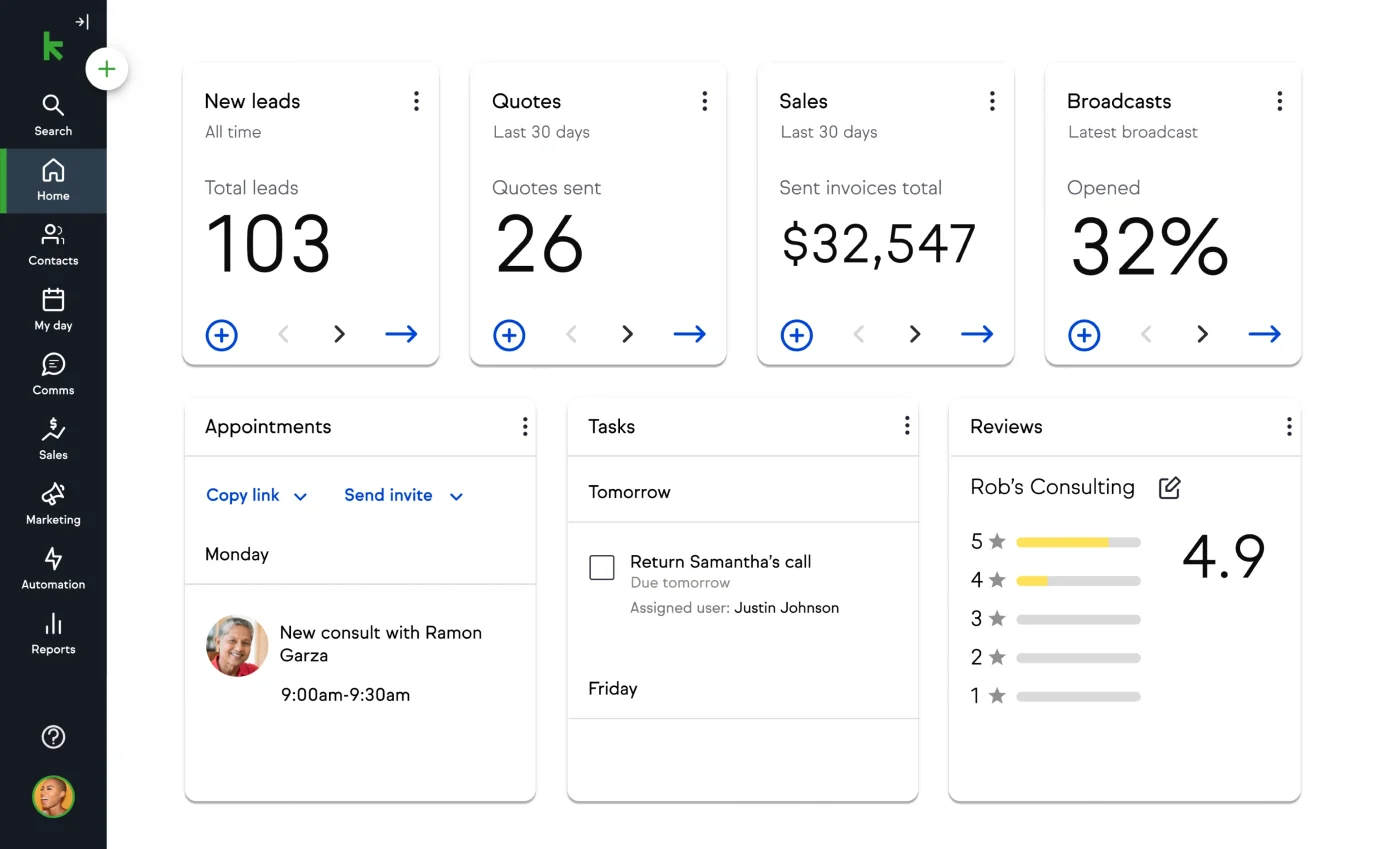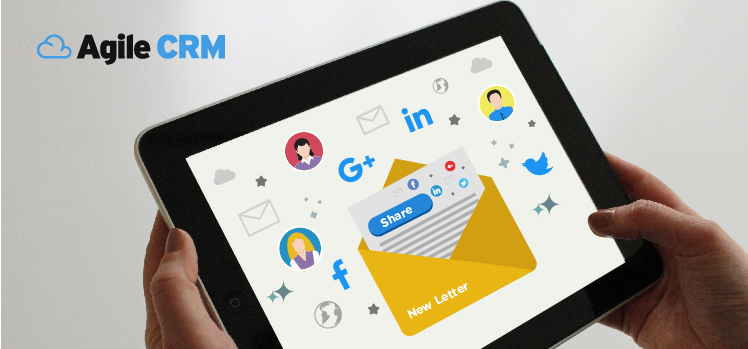
CRM Marketing for Beginners: Your Ultimate Guide to Customer Relationship Management
So, you’ve heard the buzz about CRM marketing, huh? Maybe you’re a budding entrepreneur, a small business owner, or just someone curious about how businesses build lasting relationships with their customers. Whatever your reason, you’ve come to the right place. This comprehensive guide is designed specifically for beginners, breaking down the complex world of CRM marketing into manageable, actionable steps. We’ll cover everything from the basics of what CRM is to the practical strategies you can implement right now to boost your customer relationships and, ultimately, your bottom line.
What Exactly is CRM Marketing?
Let’s start with the fundamentals. CRM stands for Customer Relationship Management. In essence, CRM marketing is a strategy that focuses on managing and analyzing customer interactions and data throughout the customer lifecycle. The goal? To improve business relationships with customers, drive customer loyalty, and, of course, increase sales.
Think of it like this: imagine you’re building a house. You wouldn’t just throw up walls and hope for the best, right? You’d need a blueprint, a plan, and a way to keep track of all the different pieces. CRM marketing is the blueprint for your customer relationships. It’s the system that helps you understand your customers, track their interactions, and personalize your marketing efforts.
At its core, CRM marketing involves using CRM software (more on that later) to:
- Collect and Organize Customer Data: Names, contact information, purchase history, support tickets – you name it.
- Analyze Customer Behavior: Understanding what your customers do, what they buy, and how they interact with your brand.
- Personalize Marketing Efforts: Tailoring your messages and offers to each customer’s specific needs and preferences.
- Automate Tasks: Streamlining repetitive tasks like sending emails or follow-ups.
- Improve Customer Service: Providing faster, more efficient, and more personalized support.
In short, CRM marketing is about building strong, lasting relationships with your customers by understanding them better and providing them with a more personalized and valuable experience.
Why is CRM Marketing Important for Beginners?
You might be thinking, “Is all this really necessary?” The short answer is: yes. In today’s competitive landscape, businesses can’t afford to ignore the power of customer relationships. Here’s why CRM marketing is crucial, especially for beginners:
1. Enhanced Customer Experience
Let’s face it: customers have choices. They can choose to buy from your competitors, or they can stick with you. A positive customer experience is a key differentiator. CRM marketing allows you to personalize interactions, anticipate customer needs, and provide exceptional service. This leads to happier customers who are more likely to become loyal advocates for your brand.
2. Improved Customer Retention
Acquiring new customers is expensive. Retaining existing customers is much more cost-effective. CRM marketing helps you stay in touch with your customers, nurture relationships, and provide ongoing value. This, in turn, increases customer loyalty and reduces churn (the rate at which you lose customers).
3. Increased Sales and Revenue
Happy, loyal customers are more likely to buy more frequently and spend more money. CRM marketing helps you identify opportunities to upsell, cross-sell, and re-engage customers who might be at risk of leaving. By focusing on customer needs and preferences, you can drive sales and boost your bottom line.
4. Better Data-Driven Decisions
CRM systems collect a wealth of data about your customers and their interactions with your business. This data can be used to make informed decisions about your marketing strategies, product development, and overall business operations. Instead of guessing, you can rely on data to guide your actions.
5. Streamlined Processes and Increased Efficiency
CRM systems automate many of the repetitive tasks associated with managing customer relationships, such as sending emails, scheduling appointments, and tracking sales leads. This frees up your team to focus on more strategic activities, such as building relationships and closing deals.
6. Competitive Advantage
In a crowded marketplace, CRM marketing can give you a significant edge. By providing a superior customer experience, you can differentiate yourself from your competitors and build a strong brand reputation.
Key Components of a CRM Marketing Strategy
Now that you understand the “why,” let’s delve into the “how.” A successful CRM marketing strategy involves several key components:
1. Choosing the Right CRM Software
This is the foundation of your CRM efforts. There are countless CRM software options available, ranging from free, basic platforms to sophisticated, enterprise-level systems. Here’s what to consider when choosing a CRM:
- Your Business Needs: What are your specific goals and requirements? Do you need sales automation, marketing automation, customer service features, or a combination?
- Budget: CRM software can range in price from free to thousands of dollars per month. Determine how much you can afford to spend.
- Ease of Use: Choose a platform that’s user-friendly and easy for your team to learn and use.
- Scalability: As your business grows, your CRM needs will evolve. Choose a platform that can scale with you.
- Integrations: Does the CRM integrate with other tools you use, such as your email marketing platform, website, and social media channels?
Some popular CRM options for beginners include:
- HubSpot CRM (Free and Paid): Excellent for beginners with a user-friendly interface and a wide range of features.
- Zoho CRM (Free and Paid): A robust and affordable option with a focus on sales and marketing automation.
- Salesforce Essentials (Paid): A scaled-down version of the industry-leading Salesforce platform, ideal for small businesses.
- Freshsales (Paid): A user-friendly CRM with a focus on sales and customer support.
2. Data Collection and Management
Your CRM is only as good as the data it contains. You need to collect accurate, up-to-date information about your customers. This includes:
- Contact Information: Names, email addresses, phone numbers, etc.
- Demographics: Age, location, job title, etc.
- Purchase History: What customers have bought, when they bought it, and how much they spent.
- Interactions: Emails, phone calls, support tickets, website visits, social media engagement.
- Preferences: Interests, communication preferences, and other relevant information.
Data can be collected through various methods, including:
- Web Forms: Capture information through forms on your website.
- Lead Capture Tools: Integrate with lead generation tools to automatically add leads to your CRM.
- Manual Input: Enter data manually, such as information from phone calls or in-person interactions.
- Integrations: Connect your CRM with other systems to automatically import data.
Once you’ve collected the data, you need to manage it effectively. This includes:
- Data Cleansing: Regularly clean up your data to remove duplicates, correct errors, and ensure accuracy.
- Data Segmentation: Divide your customers into groups based on shared characteristics, such as demographics, purchase history, or interests.
- Data Security: Protect your customer data with appropriate security measures.
3. Customer Segmentation
Not all customers are created equal. Customer segmentation involves dividing your customer base into distinct groups based on shared characteristics. This allows you to tailor your marketing messages and offers to specific segments, increasing the likelihood of engagement and conversion. Common segmentation criteria include:
- Demographics: Age, gender, location, income, education, etc.
- Psychographics: Values, interests, lifestyle, personality traits, etc.
- Behavior: Purchase history, website activity, engagement with marketing campaigns, etc.
- Needs: What problems are your customers trying to solve? What are their goals?
Once you’ve segmented your customers, you can create targeted marketing campaigns that resonate with each group. For example, you might create a special offer for customers who haven’t purchased in the last six months or send a personalized email to customers who have shown interest in a specific product.
4. Marketing Automation
Marketing automation involves using software to automate repetitive marketing tasks, such as sending emails, scheduling social media posts, and nurturing leads. This frees up your time and resources to focus on more strategic activities. Common marketing automation workflows include:
- Welcome Emails: Automatically send a welcome email to new subscribers or customers.
- Lead Nurturing: Nurture leads with a series of automated emails designed to move them through the sales funnel.
- Abandoned Cart Emails: Send an email to customers who have abandoned their shopping carts, reminding them of the items they left behind.
- Personalized Product Recommendations: Recommend products to customers based on their purchase history or browsing behavior.
- Post-Purchase Follow-up: Send a follow-up email after a purchase to thank the customer, request feedback, and offer support.
Marketing automation can significantly improve your efficiency and effectiveness. It allows you to deliver the right message to the right customer at the right time, without having to manually manage each interaction.
5. Email Marketing
Email marketing is a powerful tool for building relationships, driving sales, and keeping your customers engaged. With CRM, you can personalize your email campaigns based on customer data. This includes:
- Personalized Subject Lines: Use the customer’s name or other relevant information in the subject line.
- Personalized Content: Tailor the content of your emails to the customer’s interests, purchase history, or stage in the sales funnel.
- Targeted Offers: Send special offers and promotions to specific customer segments.
- Automated Email Sequences: Set up automated email sequences to nurture leads, welcome new customers, and follow up after purchases.
- Segmentation: Use CRM data to segment your email lists and send more relevant messages.
Email marketing is a cost-effective way to stay in touch with your customers and drive conversions. By personalizing your emails, you can increase engagement and build stronger relationships.
6. Sales Automation
CRM can streamline your sales process and improve your team’s efficiency. Sales automation involves using CRM to automate tasks such as:
- Lead Management: Track leads, qualify them, and assign them to sales representatives.
- Contact Management: Manage your contacts, track interactions, and schedule follow-up calls and meetings.
- Opportunity Management: Track sales opportunities, manage the sales pipeline, and forecast revenue.
- Quote Generation: Generate professional quotes quickly and easily.
- Reporting and Analytics: Track sales performance, identify trends, and make data-driven decisions.
Sales automation can help your sales team close more deals, improve productivity, and focus on building relationships with potential customers.
7. Customer Service and Support
CRM can improve your customer service and support operations. This includes:
- Centralized Customer Data: Access all customer information in one place, including contact information, purchase history, and support tickets.
- Ticket Management: Track and manage customer support tickets, ensuring that issues are resolved efficiently.
- Knowledge Base: Create a knowledge base of frequently asked questions and answers to help customers find solutions themselves.
- Live Chat: Offer live chat support to provide instant assistance to customers.
- Personalized Support: Provide personalized support based on customer data and preferences.
By providing excellent customer service, you can increase customer satisfaction, build loyalty, and reduce churn.
8. Social Media Integration
Integrate your CRM with your social media channels to track customer interactions and engage with your audience. This includes:
- Social Listening: Monitor social media for mentions of your brand and respond to customer inquiries and complaints.
- Social Media Lead Generation: Capture leads from social media and add them to your CRM.
- Social Media Advertising: Target your social media advertising campaigns based on customer data.
- Social Media Engagement: Interact with customers on social media and build relationships.
Social media integration can help you build brand awareness, engage with your audience, and drive sales.
9. Reporting and Analytics
CRM systems provide valuable insights into your customer relationships and marketing efforts. Use the reporting and analytics features to:
- Track Key Metrics: Monitor key metrics such as customer acquisition cost, customer lifetime value, and customer retention rate.
- Identify Trends: Identify trends in customer behavior and marketing performance.
- Measure ROI: Measure the return on investment of your marketing campaigns.
- Make Data-Driven Decisions: Use data to inform your marketing strategies and business decisions.
- Generate Reports: Create reports to share with your team and stakeholders.
Regularly review your reports and analytics to identify areas for improvement and optimize your CRM marketing efforts.
Getting Started with CRM Marketing: Step-by-Step Guide
Ready to dive in? Here’s a step-by-step guide to help you get started with CRM marketing:
1. Define Your Goals
What do you want to achieve with CRM marketing? Increase sales? Improve customer retention? Enhance customer service? Define your goals clearly and specifically. This will help you choose the right CRM software and develop a focused strategy.
2. Choose Your CRM Software
Research different CRM platforms and choose the one that best fits your business needs, budget, and technical skills. Consider factors such as features, ease of use, scalability, and integrations.
3. Set Up Your CRM System
Once you’ve chosen your CRM, set it up and customize it to meet your specific needs. This includes adding users, configuring settings, and integrating with other tools.
4. Import Your Data
Import your existing customer data into your CRM system. This may involve importing data from spreadsheets, databases, or other sources. Make sure your data is clean, accurate, and up-to-date.
5. Segment Your Customers
Divide your customers into segments based on shared characteristics. This will allow you to personalize your marketing efforts and target specific groups.
6. Develop Your Marketing Campaigns
Create targeted marketing campaigns for each customer segment. This may include email marketing campaigns, social media campaigns, and sales promotions.
7. Automate Your Workflows
Automate repetitive tasks, such as sending emails, scheduling appointments, and tracking sales leads. This will save you time and improve your efficiency.
8. Monitor Your Results
Track your key metrics and analyze your results. This will help you identify what’s working and what’s not, so you can optimize your marketing efforts.
9. Refine and Optimize
CRM marketing is an ongoing process. Continuously refine and optimize your strategy based on your results. Test different approaches, track your progress, and make adjustments as needed.
Common Mistakes to Avoid
As a beginner, it’s easy to make a few missteps. Here are some common mistakes to avoid when getting started with CRM marketing:
- Choosing the Wrong CRM Software: Do your research and choose a platform that fits your business needs.
- Not Training Your Team: Make sure your team is properly trained on how to use the CRM system.
- Poor Data Quality: Keep your data clean, accurate, and up-to-date.
- Not Segmenting Your Customers: Failing to segment your customers will result in generic, ineffective marketing.
- Not Personalizing Your Messages: Customers want to feel like they’re being treated as individuals.
- Ignoring Customer Feedback: Pay attention to customer feedback and use it to improve your products, services, and marketing efforts.
- Setting Unrealistic Expectations: CRM marketing takes time and effort. Don’t expect overnight results.
- Not Integrating Your CRM: Take advantage of integrations to connect your CRM to other tools and systems.
- Not Analyzing Your Data: Regularly review your data and analytics to measure your progress and make informed decisions.
Tools and Resources to Help You Succeed
Here are some helpful tools and resources to help you get started with CRM marketing:
CRM Software
- HubSpot CRM: (Mentioned above)
- Zoho CRM: (Mentioned above)
- Salesforce Essentials: (Mentioned above)
- Freshsales: (Mentioned above)
- Pipedrive: A sales-focused CRM that’s easy to use.
- Keap (formerly Infusionsoft): A CRM with powerful sales and marketing automation features.
Email Marketing Platforms
- Mailchimp: A popular email marketing platform with a free plan.
- Constant Contact: A user-friendly email marketing platform.
- ConvertKit: An email marketing platform designed for creators.
- GetResponse: A marketing automation platform with email marketing features.
Lead Generation Tools
- Leadfeeder: Identifies website visitors and provides contact information.
- Hunter.io: Finds email addresses associated with websites.
- LinkedIn Sales Navigator: A powerful tool for finding and connecting with potential leads on LinkedIn.
Marketing Automation Tools
- ActiveCampaign: A marketing automation platform with CRM features.
- Marketo: A marketing automation platform for enterprise businesses.
- Pardot: A marketing automation platform for B2B businesses.
Learning Resources
- HubSpot Academy: Offers free online courses on CRM marketing and related topics.
- Zoho CRM Help Center: Provides documentation and support for Zoho CRM users.
- Salesforce Trailhead: Offers interactive learning modules on Salesforce CRM.
- Blogs and Websites: Read blogs and websites dedicated to CRM marketing, such as CRM.org, Salesforce Ben, and HubSpot’s marketing blog.
The Future of CRM Marketing
The world of CRM marketing is constantly evolving. Here are some trends to watch out for:
- Artificial Intelligence (AI): AI is being used to automate tasks, personalize customer experiences, and predict customer behavior.
- Personalization: Customers expect personalized experiences. CRM systems are making it easier to tailor marketing messages and offers to individual needs.
- Omnichannel Marketing: Businesses are using multiple channels to reach their customers, including email, social media, and live chat.
- Mobile CRM: Mobile CRM apps allow sales and marketing teams to access customer data and manage their activities on the go.
- Data Privacy: Data privacy regulations, such as GDPR and CCPA, are shaping how businesses collect and use customer data.
As a beginner, it’s important to stay informed about these trends and adapt your CRM marketing strategy accordingly.
Conclusion: Embracing the Power of CRM Marketing
CRM marketing is a powerful tool that can help you build strong customer relationships, drive sales, and grow your business. By understanding the fundamentals, choosing the right CRM software, and implementing the strategies outlined in this guide, you can start building a successful CRM marketing program. Remember to start small, focus on your customers, and continuously refine your approach. The journey to mastering CRM marketing may take time, but the rewards – increased customer loyalty, higher revenue, and a thriving business – are well worth the effort. So, take the plunge, embrace the power of CRM marketing, and watch your business flourish!


